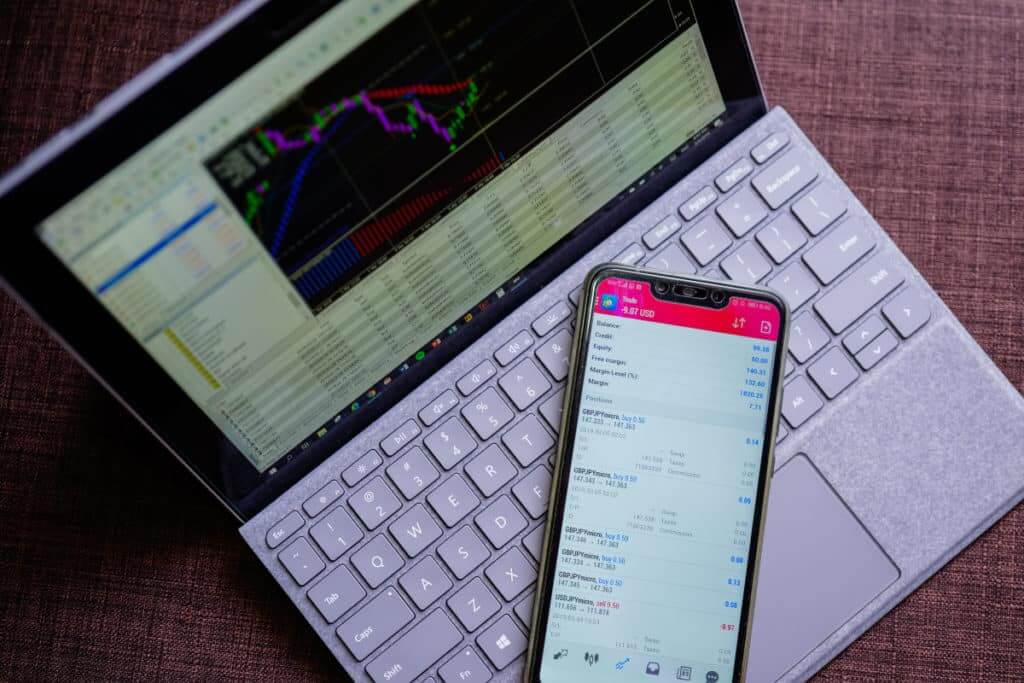
What Is Trading Profits and How to Maximize It?
People who aren’t used to financial markets may find it hard to understand various topics. For example, there are many questions like “What is trading profits?” “How to take profits in trading?”
Hopefully, there is no need to earn a bachelor’s degree in finance in order to answer the above-mentioned question. Let’s start from the beginning.
Trading in financial markets, whether it involves stocks, forex, commodities, or any other asset, is essentially the act of buying and selling with the aim of making a profit. The difference between the buy and sell price, when positive, represents a trader’s profit.
As you can see, it isn’t too hard to understand “What is trading profits?” However, it is desirable to learn as much as possible about the topic.
It is worth noting that the concept might seem simple, but the role and importance of trading profits and the techniques to maximize them are complex and multi-dimensional.
Trading Profits (Detailed Instructions)
Trading profits represent the positive returns from the efficient allocation of capital. When traders profit, it indicates they have correctly identified and acted upon price discrepancies, thereby contributing to the price discovery process.
From a macro perspective, this helps ensure that resources are directed to their most efficient uses in the economy.
Let’s continue!
- Incentive for participation: Trading profits serve as a primary incentive for participants to engage in the market. The potential to earn profits attracts not only individual traders but also institutional ones. Their combined participation increases market liquidity, which reduces transaction costs and price volatility.
- Benchmark of success: When it comes to professional traders and institutions, trading profits serve as a metric of performance. It allows them to assess the effectiveness of their strategies, risk management, and other decision-making processes.
- Compensation for risk: Trading involves risks. Price movements can be unpredictable and result in losses. The potential for profits compensates traders for taking these risks. Without the prospect of profits, there would be little motivation to take on risk.
How to Maximize Trading Profits

You may be wondering how to maximize trading profits.
- Develop a robust trading strategy: The first step in maximizing trading profits is having a well-researched and tested strategy. This strategy should be based on fundamental and technical analysis to ensure you comprehensively understand the market conditions.
- Effective risk management: We need to admit that every trade carries a risk. The key to maximizing profits is not just about making profitable trades but also minimizing losses on bad trades.
- Don’t rely on emotions: Setting stop-loss and take-profit points can prevent emotional decision-making and protect your investments.
- Continuous learning: The financial markets are dynamic. New economic data, geopolitical events, or even social trends can influence market conditions. By continuously educating yourself, you remain agile and adaptive, ensuring you make informed trading decisions.
- Use leverage wisely: Leverage can amplify both profits and losses. While it can increase your return on an investment, it also increases the risk. It’s crucial to understand how leverage works and to use it judiciously.
However, there’s more to consider:
- Review and adjust: Regularly review your trading performance. Analyzing both your successful and unsuccessful trades will give insights into what’s working and what’s not. Adjusting your strategy based on these insights can help in maximizing profits.
- Use technology to your advantage: With the evolution of technology, there are numerous tools and platforms available for traders. Algorithmic trading, automated trading bots, and advanced analytical tools can give you an edge in the market.
- Understand taxes and fees: It’s not just about the profits you make but also about the profits you keep. Understanding the tax implications of your trades and being aware of any fees or commissions associated with your trading can help in maximizing net profits.
- Avoid overtrading: Trading too frequently can rack up fees, lead to rash decisions, and increase the potential for losses. It’s essential to be patient and wait for the right trading opportunities rather than forcing a trade.
How to Achieve Maximum Trading Profits in Minimum Time

As we have already discussed, “What is trading profits?” and how to maximize profits. We can focus on other interesting topics.
Achieving maximum trading profits in minimum time is a desire for many traders, but it’s essential to remember that with high returns come high risks.
Here are some strategies and considerations to keep in mind:
- Educate yourself: Before diving into the world of trading, arm yourself with knowledge. Read books, attend seminars, and follow reputable financial news outlets. Understand the markets, the instruments you’re trading, and the external factors that influence them.
- High leverage: One way to increase potential returns is by using leverage. Platforms that offer leveraged trading allow traders to control a larger position with a small amount of capital. However, leverage can amplify both gains and losses. For inexperienced traders, high leverage can result in significant losses in very little time.
- Day trading: Day traders aim to capitalize on small price movements in stocks or commodities within a single trading day. This strategy requires a good understanding of the markets, quick decision-making, and, often, sophisticated tools and software.
- Scalping: This is a strategy where traders aim to profit from small price changes. It’s a decision-making process that requires quick reactions. A scalper will make hundreds of trades a day, so even small profits can add up. However, this strategy can be mentally taxing and requires intense focus.
- Swing trading: Swing traders hold positions for several days to capitalize on expected upswings or downswings in price. This method requires a keen understanding of technical indicators and a fair grasp of market news that might influence prices.
More Strategies to Remember

- Momentum trading: Momentum traders look for stocks or other assets moving significantly in one direction on high volume. The key is to jump onto a moving train and capture profits before the momentum ends.
- Stay updated with market news: Big market moves can often be attributed to news releases. Being ahead with the news can give you an edge, especially if you can predict how markets will react. Consider subscribing to news alerts or using platforms integrating news with trading tools.
Importance of Diversification
While putting all your money in one basket is risky, spreading yourself too thin can also reduce potential gains. Find a balance where you’re comfortable with the risk and potential return.
- Set clear goals and limits: Before you begin trading, set clear profitability goals and stop-loss limits. This will prevent you from holding onto assets for too long in hopes of a turnaround or selling too early and missing out on potential profits.
- Risk management: Always predetermine the amount you’re willing to risk on a single trade. A common rule of thumb isn’t to risk more than 1-2% of your trading capital on a single trade.
- Automated trading systems: These are computer programs that can be set up to make trades on your behalf based on a set of criteria. While they can be profitable, they’re not foolproof. Always monitor and adjust settings as needed.
- Continuous learning and adaptability: The financial markets are always evolving. Strategies that work today might not be effective tomorrow. Regularly review and adjust your strategies.
- Psychological factors: Trading is as much about psychology as it is about strategy. Avoid emotional trading. Fear and greed can often lead traders astray. Practice discipline and patience.
To sum up, trading profits play a vital role in the financial markets by ensuring the efficient allocation of resources, serving as an incentive for participation, acting as a benchmark for success, and compensating traders for risks taken.




